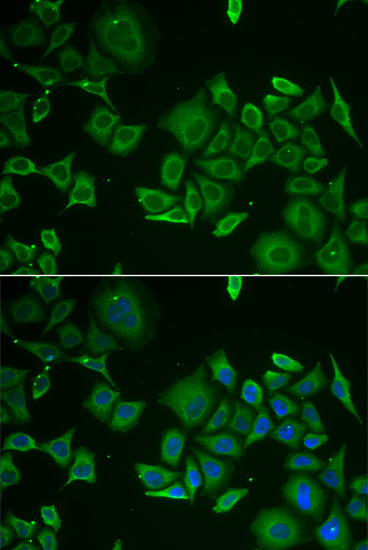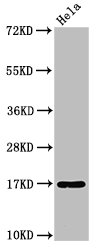C1D antibody
GTX129439
ApplicationsImmunoFluorescence, Western Blot, ImmunoCytoChemistry, ImmunoHistoChemistry, ImmunoHistoChemistry Paraffin
Product group Antibodies
TargetC1D
Overview
- SupplierGeneTex
- Product NameC1D antibody
- Delivery Days Customer9
- Application Supplier NoteWB: 1:500-1:3000. ICC/IF: 1:100-1:1000. IHC-P: 1:100-1:1000. *Optimal dilutions/concentrations should be determined by the researcher.Not tested in other applications.
- ApplicationsImmunoFluorescence, Western Blot, ImmunoCytoChemistry, ImmunoHistoChemistry, ImmunoHistoChemistry Paraffin
- CertificationResearch Use Only
- ClonalityPolyclonal
- Concentration1 mg/ml
- ConjugateUnconjugated
- Gene ID10438
- Target nameC1D
- Target descriptionC1D nuclear receptor corepressor
- Target synonymsLRP1, Rrp47, SUN-CoR, SUNCOR, hC1D, nuclear nucleic acid-binding protein C1D, C1D DNA-binding protein, C1D nuclear receptor co-repressor, nuclear DNA-binding protein, small unique nuclear receptor co-repressor, small unique nuclear receptor corepressor
- HostRabbit
- IsotypeIgG
- Protein IDQ13901
- Protein NameNuclear nucleic acid-binding protein C1D
- Scientific DescriptionThe protein encoded by this gene is a DNA binding and apoptosis-inducing protein and is localized in the nucleus. It is also a Rac3-interacting protein which acts as a corepressor for the thyroid hormone receptor. This protein is thought to regulate TRAX/Translin complex formation. Several alternatively spliced transcript variants of this gene have been described, but the full length nature of some of these variants has not been determined. [provided by RefSeq]
- Storage Instruction-20°C or -80°C,2°C to 8°C
- UNSPSC12352203
References
- Tomita T, Ieguchi K, Takita M, et al. C1D is not directly involved in the repair of UV-damaged DNA but protects cells from oxidative stress by regulating gene expressions in human cell lines. J Biochem. 2018,164(6):415-426. doi: 10.1093/jb/mvy069Read this paper






